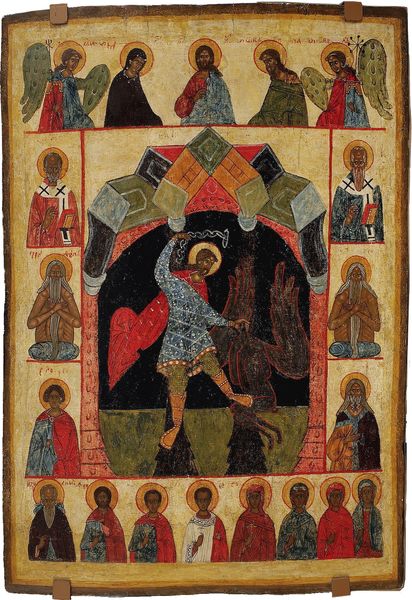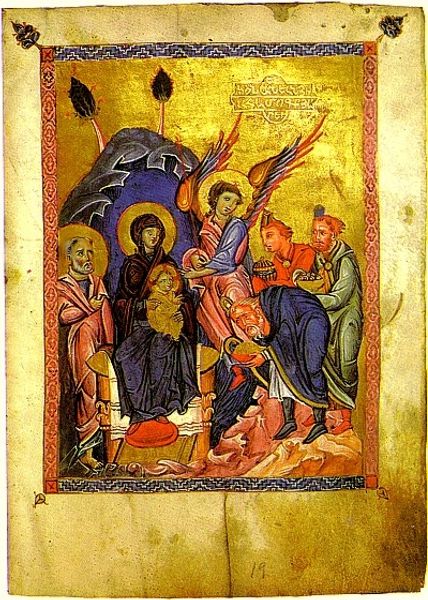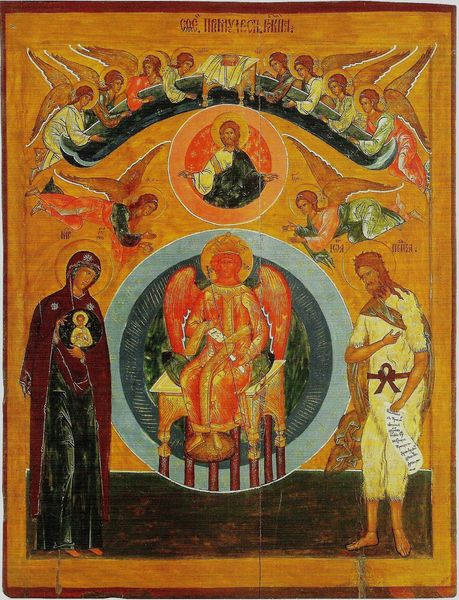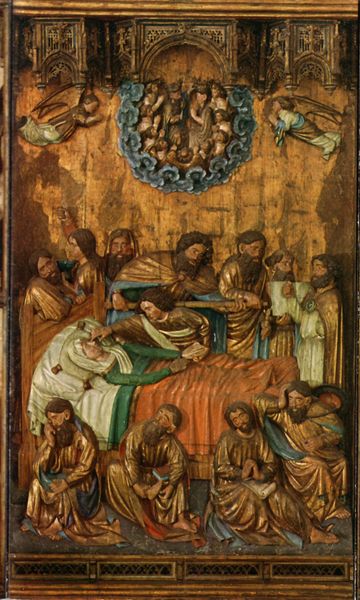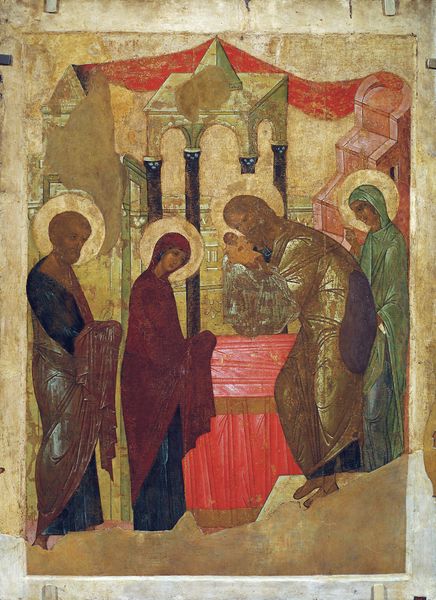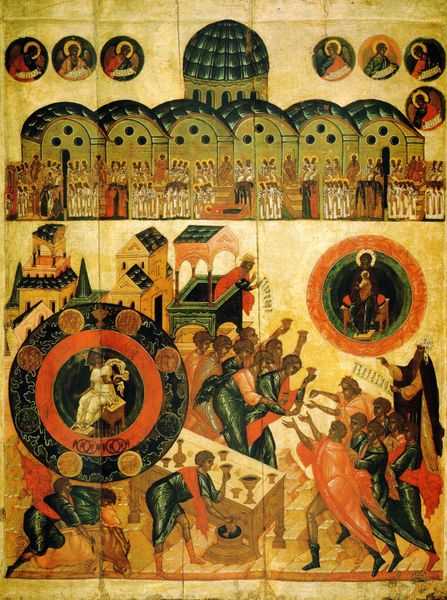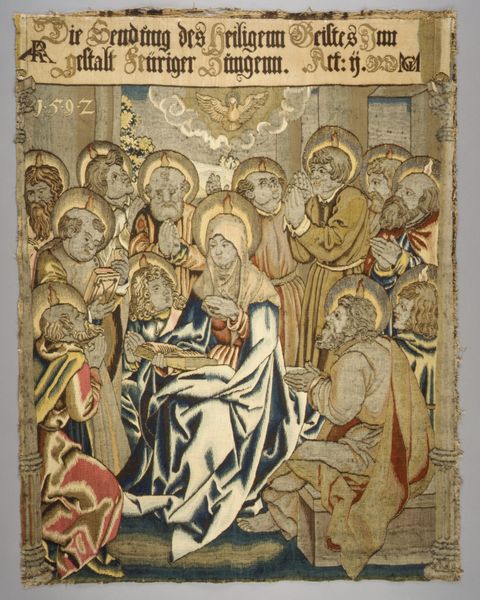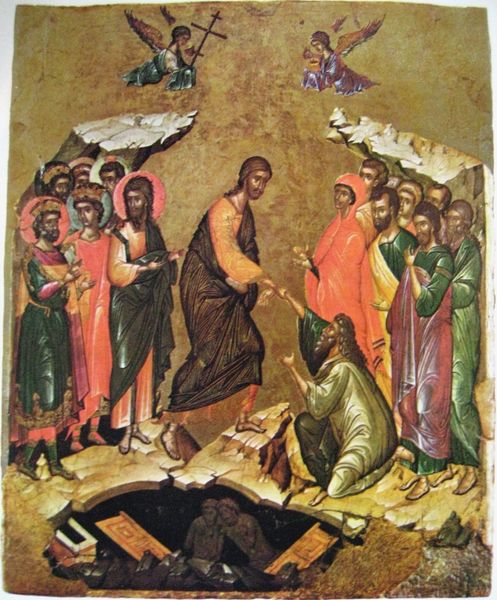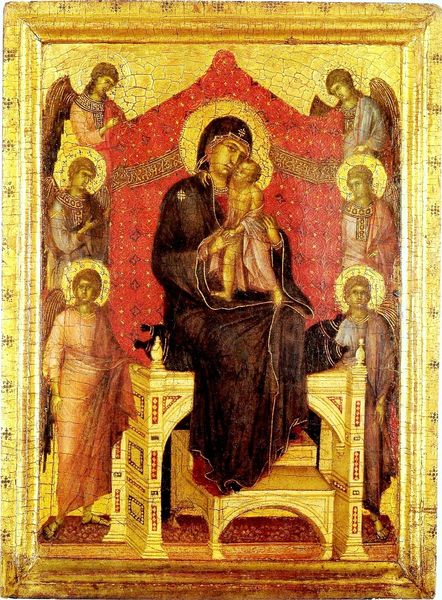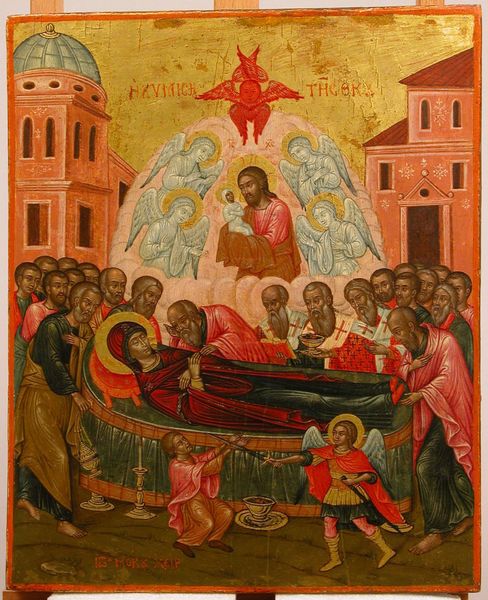
Outlaying of Mary's Corpse with Mourning Saints 1300
0:00
0:00
orthodoxicons
Saint Catherine's Monastery, Mount Sinai, Egypt
tempera, painting
#
byzantine-art
#
medieval
#
narrative-art
#
tempera
#
painting
#
figuration
#
oil painting
#
history-painting
Dimensions: 44.4 x 33.4 cm
Copyright: Orthodox Icons,Fair Use
Editor: This tempera on panel, "Outlaying of Mary's Corpse with Mourning Saints," dates back to 1300. Its location is listed as Saint Catherine's Monastery in Mount Sinai. The emotional tenor strikes me immediately; a somber, almost oppressive grief permeates the scene. What historical weight does a piece like this carry? Curator: The cultural context here is paramount. Byzantine art, flourishing during the Medieval period, served not merely as aesthetic objects, but as crucial conduits of religious and political ideology. Icons, in particular, held immense power. Think of the social function this painting held. Editor: Like, to guide and remind? Curator: More than that: the painting is there for validation, teaching and to present authority to believers of what they should align their beliefs to. In Orthodox tradition, the Dormition, or falling asleep, of the Virgin Mary is a pivotal moment, but why represent it in such a stylized manner, almost a flattened perspective? Consider what this image *does,* beyond what it *shows*. How might this painting influence a viewer's understanding of authority within both the church and broader Byzantine society? Editor: So the very *style* reinforces established power structures? The flattening, the strict composition... it’s all deliberate? Curator: Absolutely. Notice the rigid postures, the halos signifying sanctity, the positioning of Christ receiving Mary’s soul. Everything reinforces a specific theological and social order. How do you think the average worshipper encountered images like this? Editor: Presumably with a degree of reverence and perhaps even awe? To see such grand people portrayed as if they were to pass down as important lessons must affect many in their lives. Curator: Precisely. This wasn’t just art for art's sake. It was a carefully constructed message, shaping beliefs, behaviors, and reinforcing established power structures within the Byzantine world. And consider the location; Saint Catherine's, far from Constantinople, becomes a crucial outpost for disseminating these messages. It makes you consider why only a select group can produce items like this in these specific places. Editor: That definitely makes me view it differently. I was so focused on the visual language, I missed the bigger socio-political picture. Curator: That is often the case and a learning moment to be built on!
Comments
No comments
Be the first to comment and join the conversation on the ultimate creative platform.

